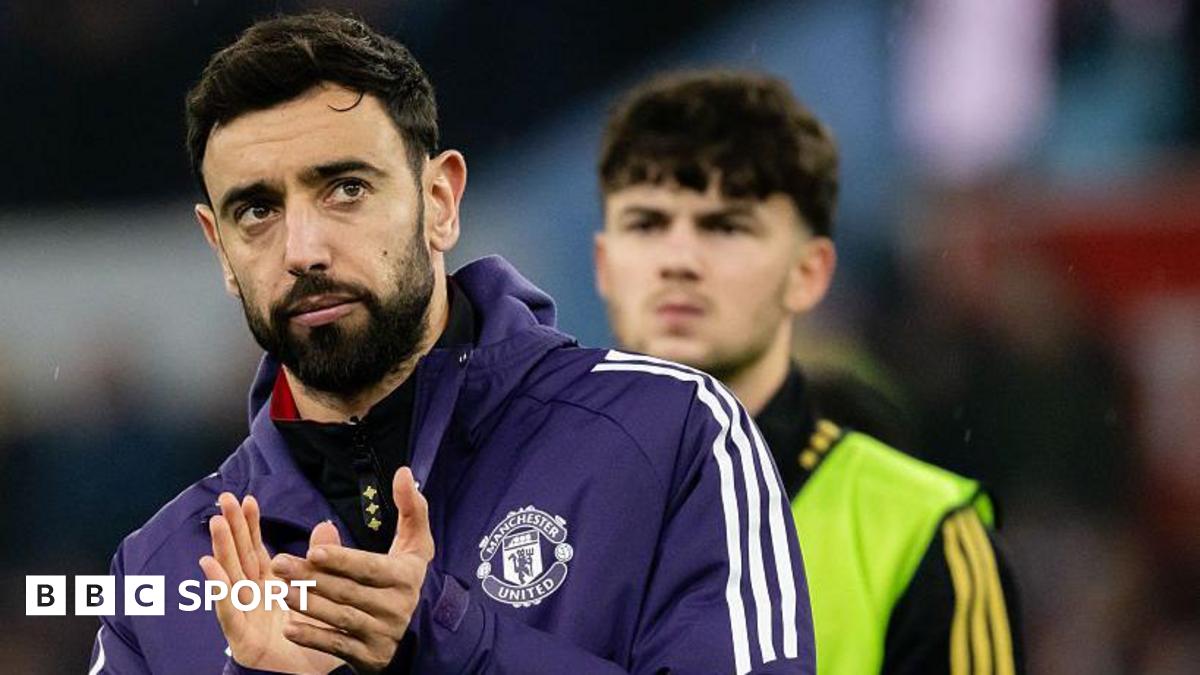Bruno Fernandes injury: What are Manchester United’s options?
Since Amorim’s arrival, he has attempted to get United playing his specific system, rarely straying away from his philosophy.
By taking a system-first approach, Amorim looks for specific qualities from his players in each position, asking them to adapt to what he wants, rather than altering his system to fit the players at his disposal.
Looking at his system and what he wants from his midfielders may help explain how he navigates the next few months.
Amorim opts for a 3-2-4-1 shape that does not rely on having the majority of the ball.
At the start of his tenure, Amorim looked to build-up short, but to his credit has opted to play long from the keeper more often – which suits the players he has. This requires players able to cover distance and win second balls.
His side are asked to carry out passing routines too with patterns of play often ending in United’s midfielders playing through-balls over the top for attackers running in behind.
The midfield duo therefore need to be able to carry out these instructions.
Amorim’s preferred midfield duo of Casemiro and Fernandes provides clues to what he asks from his midfielders.
Casemiro’s role is more positionally strict – screening the defence, breaking up play and getting up and down the pitch to close the distance between defence and attack when the ball is played long.
Fernandes is given licence to contribute in attack but, like Casemiro, has the ability to run hard up and down the pitch, getting back to defend when needed.
Both players have a tendency to play direct passes into attackers running in behind whilst taking few touches in midfield – qualities that fit Amorim’s tactical plan.
The other midfield options must therefore fit into either Casemiro or Fernandes’ roles, with Ugarte being the most likely back-up to Casemiro while Mount, Martinez and Mainoo possess some of the quality to do Fernandes’ job.
Given the constraints around the Africa Cup of Nations and United’s injuries, the other option is for Amorim to tweak his system.
This is not something he has done yet at Old Trafford, but – when asked about a shortage of wing-backs – he hinted he could, depending “on the way we play in that particular week, if we have to change for a back four, we change for a back four”.
The shortage of midfielders could force his hand in the same way.
If United are to move to four at the back, with three in midfield, the obvious player to benefit would be Mainoo.
The England man has struggled to displace either Casemiro or Fernandes given the specific tactical demands Amorim asks for in this system. And the United boss believes Mainoo’s strengths and weaknesses are more suited to a midfield three.
“The problem is that we are playing with two [midfielders] and you guys see Kobbie in a different way to what I am seeing,” he said.
“Maybe if you play with three midfielders, not with just two. But with three, Kobbie will have more minutes.”


